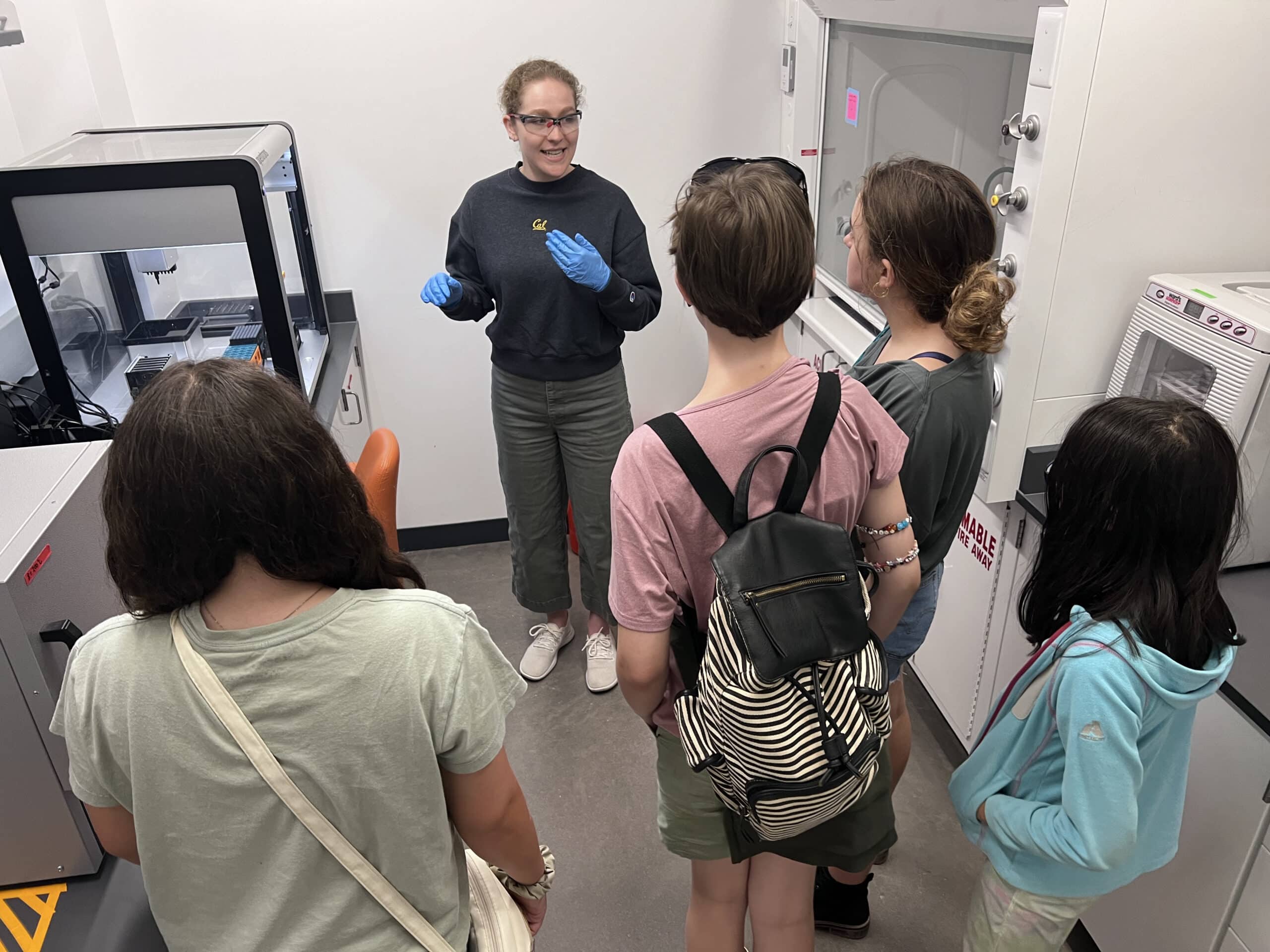
Fighting Imposter Syndrome
Annie Ming Kowalik reflects on her experiences as a woman in engineering growing up and coming to Duke.
The workshop encourages regional middle school students to develop confidence in math through team-based, logic-focused activities.

When the Space Race of 1961 captivated the globe, NASA leaned on its mathematicians to accurately predict the trajectory of the Mercury-Redstone 3 (or Freedom 7) spacecraft. But more importantly, it was to ensure the safety of one Alan Shepard, the U.S. Navy test pilot who would ultimately become the first American in space.
This included Katherine Goble Johnson, one of NASA’s research mathematicians and a key historical figure highlighted in the 2016 motion picture Hidden Figures, who said at the time of the request for a secure landing, “Let me do it. You tell me when you want it and where you want it to land, and I’ll do it backwards and tell you when to take off.”
Since that historic moment, academic institutions across the country have spent decades uplifting underrepresented and underserved future researchers in math and science through a wide variety of efforts. At Duke, Girls Exploring Math (GEM) is one of those initiatives, fostering a community for young students interested in math and offering a space to soar.
GEM is a free mathematics program and research study through the university that includes Saturday math enrichment workshops focusing on encouraging its participants to explore math. At these workshops, they deal with challenging puzzles to build problem-solving skills and engage with math outside of the standard school curriculum.

GEM also makes it a point to tackle gender stereotypes and the current environment for women in STEM head-on with its participants.
For the professors leading the program, this opportunity is the right space to discuss just how important it is for women to also be adequately represented. “Overall, we’re working to study and close the gender gap in STEM,” said Sophia Santillan, GEM’s co-director and associate professor of practice in Mechanical Engineering and Materials Science (MEMS). “This is a Bass Connections project, and it’s led by an interdisciplinary group of faculty from different institutions, and each of us contributes our expertise to the project.”
Bass Connections brings together faculty, postdocs, graduate students, undergraduates, and external partners to tackle complex societal challenges, and that’s where GEM comes in.
“Our team is made up of a diverse group of researchers who are mathematicians, engineers and other STEM majors,” said Lauren Valentino, co-director of GEM and assistant professor of sociology at UNC Chapel-Hill.
“Plus, the scientists and clinicians we visit on campus are also women from all different backgrounds. It’s important for the middle schoolers participating to see people like themselves in these kinds of roles.”
Additionally, the participants get first-hand insights from women in the field who have charted a course through STEM. “During the other major part of our time together, we prepare for a visit to a STEM woman’s lab and then meet that scientist/engineer,” Santillan said. “Usually this involves hearing about our host’s path to her career, touring her lab, and asking her questions about herself and her work.”

This summer, participants got to visit and learn more about the work going on in MEMS, hearing directly from Christine Payne, the Yoh Family Professor of Mechanical Engineering and Materials Science. “I’ve met with the GEM students since 2019, and it’s always fun to see what questions they have about both the research and the job of being a professor,” Payne shared.
“GEM is an amazing program that uses research at the interface of mathematics, education and sociology to create a really unique opportunity in Durham. I always wish there had been a program like this when I was younger.”
This year, the students visited Payne’s lab and rotated through stations that focused on different aspects of her research, which included cells, robots and microscopes. They also learned how even high school students can get involved in research. And engaging directly with researchers like Payne, who are embedded in the field, is important for GEM participants to hear what their experiences are like.
“Our program is all about shattering the stereotypes around what a typical STEM professional looks like and empowering the middle schoolers to believe that they, too, can pursue a career in STEM,” Valentino said. GEM’s structure works to tackle those stereotypes and increase participation through actively encouraging more young students to get involved.
“During our last week of the program this year, a participant’s parent was picking up their child and they thanked us for running this program,” Santillan shared. “They shared with us that their child is increasingly excited about a career in a scientific field.” And it’s that increasing level of interest that helps open doors for anyone interested in STEM, many of whom are just as excited about the field as GEM’s participants.
Read more about outreach efforts and how it impacts the work done beyond the university

Annie Ming Kowalik reflects on her experiences as a woman in engineering growing up and coming to Duke.

Cloe Liparini brings extensive experience from work at Duke and abroad to bolster the school’s community initiatives

MEMS and CS are ranked among the top 20 departments for women in STEM for their commitment to fostering inclusive, collaborative education and research.